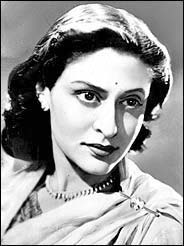Apr 19, 2024
Apr 19, 2024
by Suresh Kohli
 Author Kamala Markandaya, whose books shaped many Americans' perception of India, died in England on May 18, 2004 at the age of 80. Always a very private person, Markandaya managed to elude the limelight in death as well.
Author Kamala Markandaya, whose books shaped many Americans' perception of India, died in England on May 18, 2004 at the age of 80. Always a very private person, Markandaya managed to elude the limelight in death as well.
Markandaya wrote 10 novels over five decades. She was a pioneer in many ways. At a time when Indo-Anglian writing was dominated by men (like Mulk Raj Anand and R K Narayan), Markandaya emerged as a powerful influence. She was also a pioneer of Diaspora writing - a well-established genre today. Like many Indian writers living abroad, her memories of India were crucial to her narrative. She revisited the landscapes of her childhood and youth in her works - the taste of ripe mangoes, the white fabric of Chennai and tender coconuts. Her fiction was rife with symbolism.
| Her early writings gained instant recognition for the freshness of their approach as well narrative technique and style. Her first (and best-known) novel, 'Nectar in a Sieve' (1954), is recognized as a powerful depiction of the rural landscape. The book is a touching account of the life of Rukmani, a peasant woman, through her struggle for survival. Markandaya's last book, 'Pleasure City' (1982), is perhaps the least recognized of her works. Few critics have commented on the strong feminist sensibility that informs Markandaya's writing. Not surprising, for in her works, men are usually centrestage; women are in the background, but exert a powerful influence nevertheless. Her books serve as a reminder of the difficult lives that rural women in developing countries lead. Markandaya described her own writing as literature of concern. Tradition and change feature constantly in her writing. This was a preoccupation with most Indo-Anglian fiction until Salman Rushdie's 'Grimus' hit the scene in 1975. Markandaya's work was marked by a tendency to despair, a tragic vision and an obsession with poverty which, however, did not translate to a desire for social change. Her characters were seldom optimistic, and her stories were almost always set in fields or at waterfronts. Her themes were never repetitive, though. And the big city was never really that far. Her novels dwelt on the question of identity; her characters were almost always struggling with the 'East-West clash of codes'. Markandaya's works never quite shook off the colonial hangover. This was also true of the manner in which she dealt with the rural-urban divide. To her credit, the violence in her works has always been beneath the surface - tragic but not grotesque. Born Kamala Purnaiya in Mysore in 1924, Markandaya graduated in history from the University of Madras and, after a brief stint in journalism, migrated to England in 1948. Here, she met and married Bertrand Taylor, who predeceased her in 1986. Little is known of her life in England. She is survived by her daughter, Kim Oliver, who was with her when she died of kidney failure. Markandaya must have died a disappointed person. After the debacle of 'Pleasure City', she failed to find a publisher to back future works. Her early novels - 'Nectar in a Sieve' was a Book-of-the-Month Club Main Selection and bestseller in the US, and 'A Handful of Rice' - remain her more celebrated books. They continue to sell well and are part of the coursework in many American schools and universities. Although Markandaya lived and worked in the UK, it was the US that truly recognized her contribution to literature. In one of her rare responses to critics, she wrote to Margaret Joseph in 1976: "I do write and rewrite and polish endlessly...I could not tell you how I know when to stop, having achieved the effect I wanted. I simply know that that is just right; and then I stop being haunted." Commenting on her death, Shashi Tharoor, author of 'The Great Indian Novel' and 'Riot', told American journalists: "This is a great loss. Markandaya was a pioneer who influenced all of us Indians writing in English." |
At a glance: |
20-Nov-2004
More by : Suresh Kohli